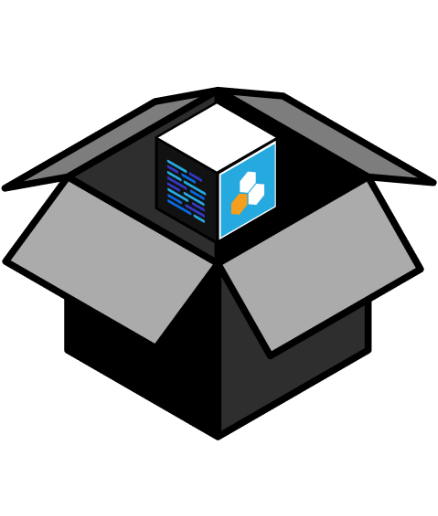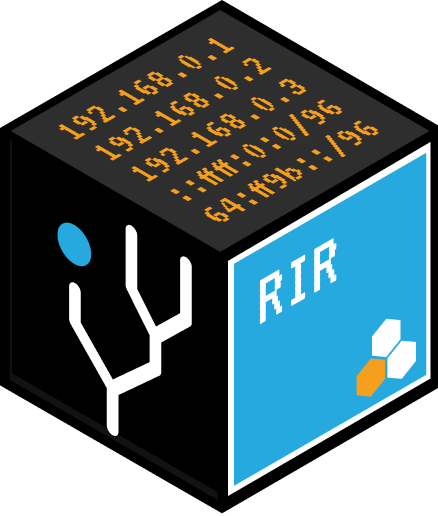Updated July 24, 2020
Network Management has only become more complex over recent years. Information technology has increased in terms of business need, relating even more to competitiveness and organizational success. An economic downturn means that IT investments and budgets need to do more with less in maintaining these services, and continuing to expand them.
The Challenges of Growth
One of the biggest initiatives affecting enterprises today is their approach to digital transformation. As enterprises continue expanding their services to both internal customers and direct/external customers, the enterprise finds itself in an interesting position. They begin to realize that the tools and platforms that they have grown their core business was built around a conventional enterprise – and with “transformation” underway – they realize that while they may be classified as an enterprise, they are having service provider issues. Now there is an obvious mismatch between the technologies they use to provide services and the products and services they offer.
Network management is no different. The same Network management tools and platforms for the Enterprise have very different use cases when solving Service Provider style environments. This puts the Enterprise in a challenging position – their current “preferred vendors” no longer solve their problems, so now they have evaluate solutions with a new set of requirements. It’s like starting from scratch, but now you have revenue at risk – that’s not a fun place to be.
An Evolving Landscape
Network management is now more than simply watching routers and switches to see if they are online. It now includes things like software, security, and telecommunications. To put it more generally, network management manages or maintains anything with an interface or IP address that communicates over a network, which becomes nearly anything plugged in that are used at businesses every day. With more remote sites comes the need to deliver software and services remotely, meaning that systems must be set up to communicate with these areas effectively and efficiently, but still maintain the core network as well. Security and compliance policies required to maintain certain business practices also add significant time and effort to IT Network Management. This is often underestimated, but requires a lot of time and resources to read, interpret, and then audit or change your own system for compliance. In telecommunications, voice over IP (VOIP) and “flattened” networks are becoming deployed as standard, which in essence puts phone services into IT management as well. In addition, don’t forget that IPv6 utilization continues to grow, and impacts multiple aspects of network management. These technology additions are only become more of an issue as edge computing takes on higher importance to improve performance and service availability. As services are all part of the same bandwidth, having insight into what is happening is key to understanding how services are being delivered and how they are performing.
All of this not only adds services, but also complexity to the network. Not all communications can take place over just any port. Then consider that some traffic needs to stay separate, like voice from data, for best performance, or sensitive information off the public network. Now imagine having to move these items from port to port logically and physically over a network, possibly daily, and multiply by your number of connected devices which could each potentially be a change to the network. To take it even a little further, imagine a network this complex, and it being changed without knowledge of management. It would cause communication problems to put it lightly. All of this is definitely network management, but far more complex and consuming that simply managing routers and switches, especially on larger networks. Hence, administrators and managers need help to keep everything documented and running well, where network management planning comes in.
Luckily, there is help out there. Several network management tools and strategies have been developed over the years to assist with managing certain aspects of the network. While some tools are better than others, the best features of these tools will be seen in this document. Some best practices for network management have also been developed. These are intended to provide some general ideas on network management, and how best to maximize time and investment of resources. It is important to note that these are not specific for any network, and that your individual infrastructure and design will greatly affect how you utilize or implement the information here.
Best Practices for Business Processes and Technology
Technology does not manage itself; it takes trained individuals to keep a network running at its best – and hopefully leveraging tools where possible to ease the headaches that come with network management. Of course, networks can get large, and thus the number of individuals and their time required managing the network increases dramatically, consuming more organizational resources. However, network management tools and sound strategies can counteract this increase. Network management tools that gather data and automate processes are well known, but business strategy should also be considered. This combined solution to network management planning not only provides technical information on a network, but can be related to several business processes as well due to IT being a part of most business functions.
From a process perspective, network management includes your customers and employees. They either use or depend on your system every day, and will have up to date knowledge on what’s going on from their perspective. It is very easy from the back end management perspective to not always see the network from the other side. By involving them in the management process, you can find information about current events and issues with the network and what can potentially be improved to better the business. It could also provide information on where bottlenecks or other processes are holding back the business are, so that they can be adapted to make way for better, collaborative processes. In doing so, you can align the business and IT strategic needs to work together and formulate a plan that benefits both, improving the overall quality of the two individual areas. Examples of this benefit could be anything from simply combining projects to save time on moving ports and network speeds around, to finding an issue in a fundamental IT process that completely revolutionizes IT and business practices. You never know with multiple perspectives, priorities, and business areas involved, but having them work together provides the opportunity.
Communication is of utmost importance in network management in order to know what is going on, what issues exist, and how to better maintain and manage the network for the future; but everyone is not always available to collaborate. The next best practice is creating a library of sorts to help with collaboration and extending the knowledge of everyone involved in network management. Of course we can never document everything we do, or it would be all we do. However, important notes and information can be kept securely to provide data when needed to specific personnel. This can include simply IT information on upcoming projects, or even better scenario business information as well relating to department priorities or even wish lists. The idea is getting information out to everyone and that it communicates ideas as they relate to the network everyone uses. A major feature of this practice is allowing functional business areas to see information from other areas, improving communication and understanding between them as well. In the end, the library would assist the organization in becoming interdependent across all departments, integrating services, and better working with each other. By knowing where each other is coming from, network management becomes a team effort that benefits everyone including the organization overall. While clearly a strategy best practice, a network management tool could also be used to store and distribute the information. Legacy network management tools can sometimes create silos of information, which can make communication more of a challenge. It makes sense to keep these design goals in mind as you look at management tools and platforms.
Security and governance compliance are becoming a larger part of IT and business practices, not to mention the audits that come with them. Being fairly new, it has always normally fallen to IT to manage it; but those times are gone and now it is a full on business function. In addition, consider the complexity of some of the policies. PCI compliance that deals with credit cards is only several pages long and very detailed; imagine all the policies your organization may need to comply with that are longer or less clear. Gathering the information from your own network after analyzing it takes significant time alone. Network management will be involved in all of these policies, and the tools that can automatically gather information from the network and can better develop and process that data are the best to find. Please note that depending on what policy or compliance you are dealing with, certified tools may be required. The scope is what relates this to overall management, as day-to-day policies likely do not need all the attention of something organization wide or a strategy for themselves alone outside of simple regular maintenance.
In all of these best practices, the idea is that network management is a business function that happens to be controlled from IT due to the equipment and specific practices of network management. It involves the entire organization, which requires everyone to work together, to operate under one unified strategy, along with using proper network management tools to maximize time and investment of resources to benefit the organization as a whole.
Technology Considerations and Adoptions
There is a lot of technology out there. Part of network management is upgrading and installing technology, and choosing that next piece of equipment can be a big investment. Each piece claims to be the best for your network, and it is up to you to determine which best fits your own network if and when it is needed. Below you will find a brief plan for adopting new technology into the network or for use with the network in the case of new tools. You may also be presented with choices regarding how you deploy network solutions. With hardware purchases being the primary network delivery method 10 years ago, you have a variety of methods today and they will impact your approach. Cloud (externally hosted) products versus local deployment or even a hybrid build out may be the most effective model for your organization – but you need to be flexible. With these changes to deployment, you will also run into the challenge that your network management tools will most likely impact other groups within your organization moreso than in the past. As there are more technical initiatives, you may find yourself stepping on toes, so it is worth looking at what tools you currently have internally deployed, but look across your organization as well.
First determine what you are using in your organization. Then find out why and who is using them to what end. In doing so you will determine your technology or tool need by seeing what is performing the same function to potentially remove and regain resources, and what needs to be improved y something upgraded or new. Then create your plan for your management strategy for the new equipment such as why it is needed, how it will be used, etc. It is best if this involves phases as well as measurements for success and progress at determined intervals to ensure it is meeting all requirements. The key here will be looking at your organization holistically and investigating outside your own group. Since “the network stack” is alive in well in multiple groups, it’s a good idea to see how others are solving the issue – or you may even discover they have similar network management issues.
Next is the selection process, where the needs you determined earlier will help narrow the number of selections available. Now that you know what a new tool needs to do, the selection becomes easier. Make sure to do all your homework on each potential selection. Things like demos and presentations can help, and compatibility should be a major concern. Also, if the tool or product is being bid on, ensure that everything is documented to avoid future appeals by vendors if they feel there was bias towards another. Then after you make your selection, follow the plan made earlier to implement and use your selection. This is where the measurements come in, and they should be used at least at the end of every phase to determine how the new tool or product is functioning next to expectations and needs. After each major step is even better, but this does increase time required. The scope of your solution can help determine this for you. The measurement process will also provide a time to adapt the plan and adoption process as needed since it is a sort of stopping point. With the push to virtualization – network management tools now have a variety of deployment methods – cloud, OVA, container – if you have the operating environment, it would be very good to understand what delivery methods you would support for products in this segment. One other key element of the selection process is going to be understanding the integration capabilities. Depending on your technical resources, this may come in the form of having a robust API, or even professional services to augment your team’s capabilities. You know your automation goals, and network management plays a big role – it’s a good idea to have a direction in mind so you don’t end up buying software that never gets off the shelf.
Investment and Use of Resources
With networks becoming larger, more complex, and responsible for a bigger piece of business functions, time and resources will naturally increase as well. However, network management tools can minimize that increase, and possibly even prevent it. With any action there is a cost, even using a management tool. But the tools themselves can also increase or decrease the cost as well through training and how long it takes to use them. The usual issue is that a tool that is easy to use does not solve all the needs, but one that solves all the needs is too complex and takes too much time and resources to learn and use properly. Usability can drive up costs, but another driver is insufficient integration capabilities. If network management solutions end up creating another isolated silo or don’t interact with your other tools, you run the risk of adding costs and time to your efforts – without getting the value you intended.
The old approach to this solution was simply getting tools that solved individual purposes, and uses a lot of tools. This created a lot of overhead and other requirements such as specialized knowledge for each one. Then the larger tools were sought, but were very underutilized due to complexity and inability to use them. What resulted was a lot of information in multiple formats showing so many different things it could only be interpreted by those who ran the tools, which from all other information here is not network management performed by the organization as a whole. It creates some disconnect between those who gather and understand the information from the other business functions.
The new approach is far more versatile. It looks for network management tools that minimize routine tasks and require little to no maintenance. Also tools that can be configured provide flexibility in its use, requiring fewer tools overall. Also, tools that can be upgraded or expanded are being sought, and if the functions are modular all the better. It improves a single tool that the organization is already familiar with, and minimizes cost by letting you purchase only modules you need. Other simple pricing structures are becoming more common as well with site licenses and maintenance contracts that include and promise upgrades.
Best Technology Features for Network Management
Not all tools or strategies can do everything, nor should they be expected to. However, some features are so important to network management that they should be included if at all possible. They may be tools, strategic processes, or relate to both, but a good management solution will include both.
The first feature is the ability to discover and inventory your network and topology. It is very difficult to manage and maintain what you don’t understand or know exists. Keep in mind though that discovery is a relative term. You will need to determine exactly how the tool or strategy discovers components, and determine whether it will provide the view you need.
Next is configuration management, and improving operational efficiency. This could deal with process automation, or performing/assisting with any other task that will save the organization time and resources. Naturally the more the better in one tool, as discussed earlier. This also relates to the specific ability of determining how changes will affect the network. The importance of this specific feature comes from changes being the most likely cause of problems on the network, up to 60%. Finding a tool or strategy that can curb that statistic will make a good impact on saving time and resources.
The final feature is application performance. This includes not only quality of experience for the user, but also diagnosis abilities of the network management tool or strategy. For experience, it is important that is be usable. As discussed earlier, a tool that is not user friendly will not be utilized to it farthest ends, meaning the investment is not maximized, and network management is not being as efficient as possible. It is even better if this can be customized somehow. The other performance measure is diagnosis. Of course it should show certain information about your network, or not be called a management tool or strategy. But if it can show far more information, and be able to diagnose other problems as well, then it supports network management by showing that the network is functional, not the problem, and then showing what is. Depth is also an important diagnosis factor, meaning the ability to drill down into components to see more information. In short, the tool or strategy needs to be both usable, and show as much information as possible.
Measure Your Planning Progress
As with any new plan or project, its progress must be measured to ensure it is providing the needed solution as well as information on return on investment (ROI). This is true whether it is a network management tool or strategy. The time periods at which you measure and metrics utilized must be determined by you based on the solution you are implementing and your own needs. The most important factor is to be fair and not biased. Only showing positive or negative measurements is not an effective way to gauge whether or not the solution is successful. Below are a few metrics and brief descriptions on them that could be used for measurement. Please remember this list is far from all inclusive, and may or may not be needed by your organization.
With the measurement we are looking for an increase in efficiency and investment of resources. This means less work should be required and require less time to complete things like breaks and trouble tickets. Thus, some metrics include whether or not the amount of trouble tickets is fewer, especially network related. For those tickets, are there fewer repeats, and did it take less time to complete them. For changes, were there fewer unapproved or failed changes are good metrics to measure how changes are being made within network management. More directly, was there a cost or time savings overall and then further detail it into adopting new components, retiring old equipment, etc. For security compliance, do audits require less time to complete, their general quality from reports, and scores can all be measured. All of this relates back to the central idea of reducing cost in all aspects, and making network management an efficient and effective part of business function.
Network Management For Your Future
Network management is only becoming larger and more complex. The tasks required are a part of the entire organization, but management still falls to IT. Naturally, with increasing work load comes increased costs, but in bad economic times this can be hard to achieve. Using network management tools and strategies combined can help. In using both at the same time, you are getting all the benefits from a technological automation or functional ability, and from the process in terms of strategy and how the network will be managed in terms of business function.
The overall goal is to make management quicker, faster, and better all the while reducing cost and maximizing the investment placed into network management. While one or other alone can be used, it will not be the best choice. Technical ability of tools combined with the business processes and strategies for the organization creates the best chance for a successful solution so all factors can be discovered and analyzed together. Network management has changed; be ready, and make it into a part of the organization.








